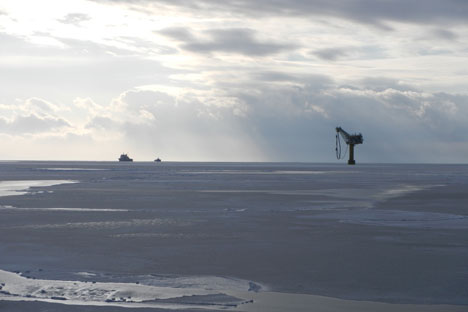
The record deposits on the Yuzhno-Kirinsky offshore gas condensate field at Sakhalin have turned out to be much smaller than reported: Instead of the announced 464 million tons of oil, the real deposits may total just 6 million tons.
Industry sources revealed the record deposits back in February. The official statement was made on 9 April - however, estimates of the volume of the reserves turned out to be premature.
Sergei Donskoi, the head of the Ministry of Natural Resources, said that the State Reserves Commission had only contained 6 million tons of oil (C1 and C2), 636 billion cubic meters of gas (C1 and C2), and 97 million tons of condensates for the Yuzhno-Kirinsky field.
“Judging by the production plan, there’s just one oil deposit there and with a very low recovery factor – 0.1 percent. It might be difficult to carry out commingled production of oil and gas”, he added.
According to Kommersant’s source, the old exploration data might feature those 464 million tons. The Yuzhno-Kirinsky deposit was discovered in 2010 as part of the Kirinsky deposit, under the Sakhalin-3 project. Gazprom found the oil deposit in a follow-up exploration in 2013.
Gazprom has refused to comment on the volume of the reserves, explaining that the company has not received the State Commission’s final protocol.
Valery Nesterov of Sberbank Investment Research believes that the revision of the oil reserves may push Gazprom back to the initial exploration plans for this deposit as the key resource base for Vladivostok-LNG, and reschedule its start date again. The fact that it is only gas and condensate simplifies the project. However, he adds, the increased condensate reserves may drive up expenses, as this will require extra infrastructure for its processing and transportation from the site. At the same time, he points out that although that fact was previously ignored, it is a valuable commodity whose production is now constantly on the rise.
Full text available at Kommersant.ru.
All rights reserved by Rossiyskaya Gazeta.
Subscribe
to our newsletter!
Get the week's best stories straight to your inbox